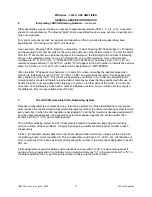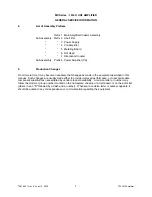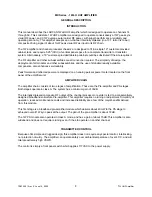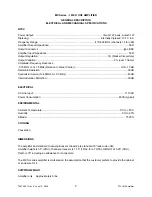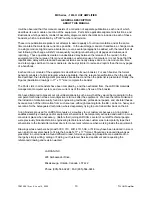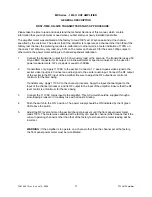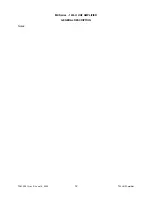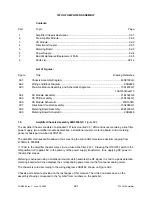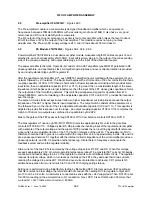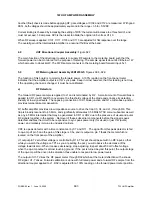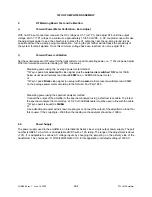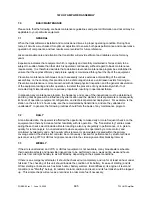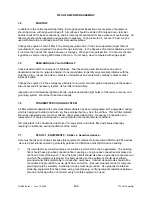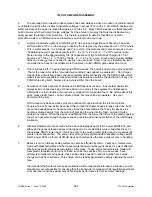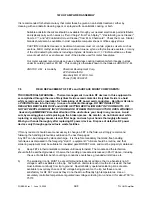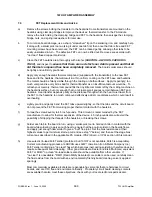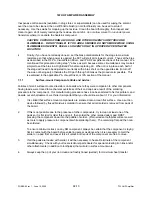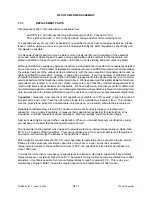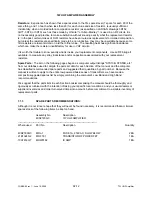
1W UHF AMPLIFIER ASSEMBLY
PUB99-92 rev 1: June 19, 2000
92-8
1
W UHF Amplifier
It is recommended for better accuracy that meter faces be given an anti-static treatment, either by
cleaning with an antistatic cleaning agent, or sprayed with an antistatic coating, or both.
Suitable antistatic chemicals should be available through your nearest electronics parts distributor,
and typically carry such names as
"Zero Charge"
from Tech Spray
™
,
"Destaticizing Lens Cleaner"
from G-C
™
, and
"420 Antistatic Screen Cleaner"
from M.G. Chemicals
™
. Check them out. Similar
brands should also be available in most reputable computer shops or office supply stores.
CAUTION: Antistatic cleaners or treatment chemicals must not contain organic solvents such as
acetone, MEK, methyl isobutyl ketone, benzene, toluene, xylene, ethyl cellosolve acetate, or many
of the chlorinated hydrocarbons including ethylene dichloride and 1,1,1 trichloroethane, as these
solvents will etch or even dissolve most of the plastics used for meter faceplates.
Our meter supplier recommends and uses a harmless coating treatment which it keeps in stock
under its catalog number FS 681. This coating is otherwise known to the trade as
ANSTAC 2-M
.
ANSTAC 2-M
is made by
Chemical Development Corp.
22 Portsmouth Rd.
Amesbury MA 01913 U.S.A.
Phone (508) 388-2221
.
7.8
FIELD REPLACEMENT OF FETs and SURFACE MOUNT COMPONENTS:
TOXIC MATERIALS WARNING... Thermal management in certain RF devices in this equipment is
accomplished through the use of Beryllium Oxide ceramic material. Beryllium Oxide is a hard
white ceramic used as insulation for heatsinking of RF power semiconductors. Beryllium Oxide is
a POISON if taken into the body. In case of accidental breakage, DO NOT INHALE THE
RESULTING BERYLLIUM DUST and AVOID GETTING BERYLLIUM DUST IN YOUR MOUTH. DO
NOT LET BERYLLIUM DUST INTO YOUR BLOOD STREAM THROUGH CUTS OR OPEN WOUNDS !!
Seek and get IMMEDIATE medical attention if the dust enters your body in any manner. Avoid
cuts by wearing gloves while picking up the broken pieces. Be careful - do not inhale dust while
replacing or emptying vacuum cleaner filter bags, and wash your hands thoroughly afterward.
Wash your hands thoroughly after replacing RF power devices. Dispose of defective RF power
devices only through approved toxic waste facilities.
If for any reason it should become necessary to change a FET in the field, we strongly recommend
following the handling precautions outlined on the next few pages:
Any FET can be damaged by static discharge. It is therefore mandatory that static-free handling
techniques as discussed in the foregoing "static 1, equipment 0" tutorial should be routine, and that
soldering equipment must be suitable for insulated gate MOSFET work, and must be properly maintained.
a)
Keep FETs in their anti-static containers until ready to install. The module and the technician
should both be earthed/grounded. Observe the handling procedures discussed in Part 7 above, including
the use of antistatic bench coverings, conductive overshoes, grounded wrist straps, etc.
b)
The soldering iron tip MUST be at earth/ground potential at all times, that is, absolutely no AC
voltage must be available on the tip. Test with an ohmmeter each time the iron is used; the test
must indicate continuity from tip to ground. Special battery operated soldering irons are also
available to avoid any chance of AC voltage being present on the tip, but these are not
satisfactory for RF FET work as they do not heat to sufficiently high temperatures. Use an
accurately controlled temperature regulated low voltage soldering iron, and set it for about 700° to
750°F.

